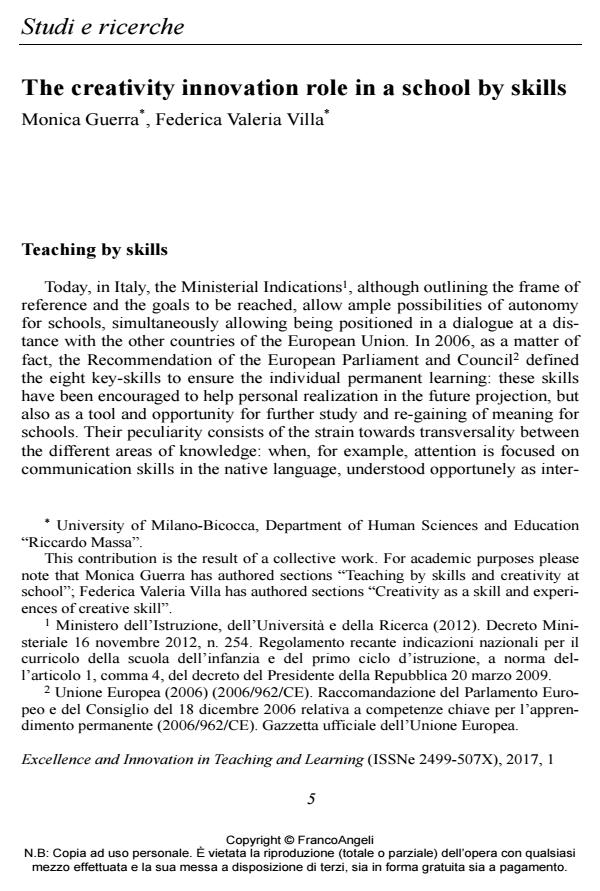The creativity innovation role in a school by skills
Journal title EXCELLENCE AND INNOVATION IN LEARNING AND TEACHING
Author/s Monica Guerra, Federica Valeria Villa
Publishing Year 2017 Issue 2017/1
Language English Pages 12 P. 5-16 File size 157 KB
DOI 10.3280/EXI2017-001001
DOI is like a bar code for intellectual property: to have more infomation
click here
Below, you can see the article first page
If you want to buy this article in PDF format, you can do it, following the instructions to buy download credits

FrancoAngeli is member of Publishers International Linking Association, Inc (PILA), a not-for-profit association which run the CrossRef service enabling links to and from online scholarly content.
Working on teaching today means observing and decoding the teachinglearning process which is established between the adult and the child, between the class and the context, and between man and society. Today, in Italy, the Ministerial indications, although outlining the frame of reference and the goals to be reached, allow ample possibilities of autonomy for schools, simultaneously allowing being positioned in a dialogue at a distance with the other countries of the European Union. In 2006, the Recommendation of the European Parliament and Council defined the eight key skills to ensure the subject’s permanent learning. In the United States, the key skills are described in wider, positively vague, terms, on areas referred to critical thinking, to collaboration, to creativity and meta-cognition, and are set out in different explanatory frameworks. Amongst the skills proposed, we are focusing here on the one oriented towards creativity, fundamental for the complete development of the person projected to the future meant as a set of factors including the cognitive aspects, the traits of the personality, the motivational aspects, the emotive factors and the connection with the environment that stimulates or inhibits the expression of the creative potential. This paper, by some explorative studies’ outcomes that involved primary teachers and students, meant to discuss how inserting creativity in teaching by skills, means supporting the abilities involved in it, promoting the child’s experience through the offer as issues and conversations of the contents of knowledge, with various and flexible teaching strategies aimed at concerning the cognitive and learning styles of each one.
Keywords: Creativity, teaching, key-skills, divergent thinking, primary school, creative teaching.
Monica Guerra, Federica Valeria Villa, The creativity innovation role in a school by skills in "EXCELLENCE AND INNOVATION IN LEARNING AND TEACHING" 1/2017, pp 5-16, DOI: 10.3280/EXI2017-001001